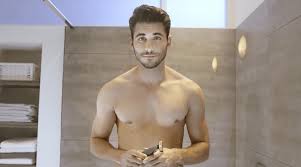
The Top 5 Causes of Power Outages
Did you know that in 2020, the average US citizen went without electricity for more than eight hours last year?
“My power went out!” But you have no idea why.
Power outages can be caused by a variety of things, from storms to car accidents. If you don’t know what’s causing your power outage, it can be difficult to know how to handle the situation.
But don’t worry. Keep reading because, in this guide, we’ll teach you all about the top 5 causes of power outages so that you can be prepared for anything. We’ll also show you how to stay safe and keep your family safe during a power outage.
Table of Contents
1. Weather-Related Outages
Weather-related outages are a major problem for utilities and their customers. High winds, ice, snow, and storms can all lead to power outages by damaging power lines or equipment. These outages can be costly and disruptive, especially for businesses. In addition to the direct costs of repairing damage, businesses may also lose revenue due to lost sales or production.
Power outages can also be dangerous, as they can prevent people from using essential services such as medical equipment or heating and cooling systems. As a result, utilities need to have contingency plans in place to minimize the impact of weather-related outages.
2. Car Accidents
A car accident can have several consequences beyond the damage to the vehicles involved. If a car hits a utility pole or knocks down power lines, it can cause a power outage in the surrounding area. This can be especially disruptive if the accident occurs during extreme weather conditions, as it can prevent people from being able to heat or cool their homes.
In addition, a power outage can cause traffic signals to stop working, making it more difficult for drivers to navigate through an already chaotic situation. In some cases, power outages can also lead to fires, as electrical equipment may malfunction without power.
As a result, it is important to be aware of the potential hazards of hitting a utility pole to avoid causing a widespread power outage.
3. Equipment Failures
Equipment failures are one of the leading causes of power outages. Power plants and electrical grids are complex systems with a lot of moving parts. Over time, these parts can wear down and break, causing problems. Equipment failures can cause blackouts by disrupting the flow of electricity and damaging power lines.
They can also cause brownouts, which occur when the voltage Drops. This can damage appliances and other equipment. Equipment failures are often caused by wear and tear, but they can also be caused by extreme weather conditions, human error, or sabotage.
To avoid equipment failures, power companies regularly inspect and maintain their equipment. They also keep spare parts on hand in case something does break down.
4. Animals
Animals and power lines don’t mix. If animals come into contact with power lines or equipment, it can cause an outage. This is often seen during wildlife mating season when animals are more active. Animals can damage equipment, disrupting service. They can also knock down power lines, creating a hazard for people and animals alike.
To help prevent outages, keep animals away from power lines and equipment. If you see an animal near a power line, call your local utility company immediately. By taking these precautions, we can help keep the power flowing.
5. Human Error
Human error is often cited as a leading cause of power outages. While technological advances have made the electric grid more reliable, it is still vulnerable to the actions of people. One of the most common ways that human error can lead to an outage is through damage to equipment or power lines.
This can happen when someone accidentally strikes a line with a vehicle or when tree branches fall onto power lines. In addition, human error can also occur when someone attempts to tamper with equipment or deliberately causes damage. Such vandalism can result in significant disruptions to service.
As the electric grid becomes increasingly complex, it is important to take steps to reduce the role of human error in causing power outages.
When Is It Time to Call a Professional?
If your power goes out, you may be able to troubleshoot the problem yourself. However, if the outage is widespread or you are unsure of the cause, it is best to call a professional.
A certified electrician can help you determine the cause of the outage and make any necessary repairs. They can also help you take steps to prevent future outages.
In addition, if you are experiencing a brownout, it is important to call a professional. Brownouts can damage appliances and other equipment. An electrician can help you determine if your equipment has been damaged and make any necessary repairs.
When the power goes out, it can be disruptive and even dangerous. However, by understanding the causes of power outages and taking steps to prevent them, you can help keep your family safe and your home running smoothly.
You could also try a generator refueling service if your generator has stopped working.
Want to Learn More About These Causes of Power Outages?
No one wants to experience a power outage, but when they do, it’s important to be prepared. In this guide, we’ve outlined the five most common causes of power outages and what you can do to handle them. Stay safe and stay powered up!
And don’t forget to check out our blog for more articles like this one on how to survive a power outage and more tips for power outages.








